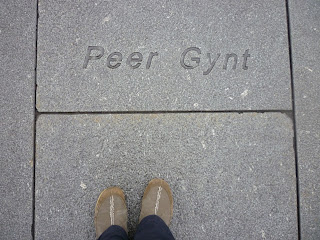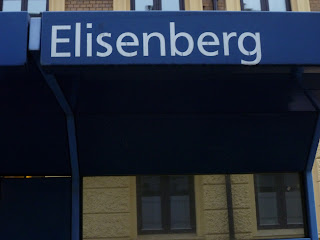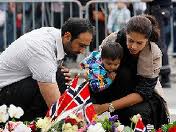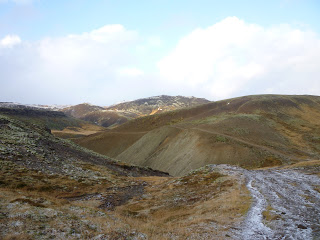Norway is known to have one of the most progressive and experimental penal systems in the world. The maximum sentence for any criminal is 21 years, and those years are devoted to providing the resources and facilities required for the practical and moral development of these criminals. Even Breivik (the recent Norwegian terrorist and gunman charged with 77 deaths) has been given this same sentence. Despite public demand to have him subjected to a more severe sentencing, the Norwegians are making no exceptions to their imprisonment policy. I think the Norwegian Prime Minister's response to the terrorist attacks reflects the penal philosophy nicely: “If one man can show so much hate, imagine how much love an entire nation can show.” In dealing with acts of inhumanity, Norway seems to be a leading example in the virtue of not repaying evil with evil, but with grace and mercy. They've really turned a leaf since the Viking Age...
 |
| I would take Breivik's "solitary confinement" cell over my room any day. |
The other day, I visited Akerhus Fortress in Oslo. It dates back to the 14th century, and has served a variety of functions - a primary one being as a prison for convicts and political enemies. Today, it acts as a museum, and retells stories of inmates in the 18th and 19th century, and their infamous crimes and escapes. The prison system in those days was used as a sort of house of slavery; work included cobbler work, tailoring, carpentry and stone masonry.
Throughout the tour of the fortress, there was a strong emphasis on how unideal the prison system was throughout the centuries. As I mentioned above, it served as a form of slavery, and because of the lack of individual rooms, there was much communal living. The criminals themselves admitted that this set-up acted as a sort of “school for criminals”. After their escape from prison, they would be able to employ newly acquired lessons for their criminal engagements. It was eventually realized that reform was needed, and quite possibly a new holding space for criminals, as Akerhus was not fit for solitary confinement or for the growing number of prisoners.
 |
| Akerhus Fortress |
 |
| On the grounds of Akerhus Fortress |
Apart from exhibiting very interesting history and entertaining personal accounts of inmates, it is very clear that the primary thrust of the fortress museum is to demonstrate that their current progressive penal system is strongly rooted in the history of internment at places like Akerhus fortress. In the middle of the 1800s, prisoners were beginning to be moved to alternative prisons, where more effective punishment and restorative justice could take place. New directions introduced a much more strict solitary life, interactions limited to the prison director, priests, teachers, and prison guards.
Curious to see today's allegedly progressive prison conditions in Norway, I asked the museum curator where the current Oslo prison is located, and if I could visit it. She looked at me like I was crazy and said she didn't think that was possible. I explained that this is allowed in Canada and that I was curious to see how different their set-up is different from ours. However, apparently, privacy for inmates is one of Norway's prison philosophies.
 |
| More scenes of Akerhus |
Norway has been criticized for their “cushy prison” experiments, however, they seem to be proving quite effective. Prisoners can get an education (degrees in fact), married, and acquire many practical skills. If you have time, check out this prison in the link below; it's an island south of Oslo called Bastoy. It is a low-security prison, where inmates live in houses, have saunas, sun-bathe, study, etc. This is the most lofty of Norway's prisons.
 |
| Believe it or not, this man is in prison. |
These "cushy prisons" are obviously not for all prisoners. They are for prisoners who have demonstrated considerable improvement, and are preparing for transitioning back into society.






























